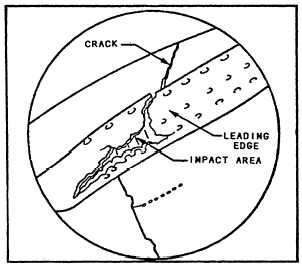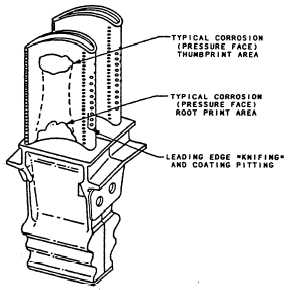Figure 2-28.—HP turbine blade impact damage.
life of an LM2500 GTE. The combined effect of film
cooling and protective coating will extend the service
life. Coatings are thinly and uniformly applied by a
vacuum film deposition process. Coatings do not
usually cause problems by chipping, peeling, or flaking.
The normal failure mode is usually by pitting, rub off,
or nicks and scratches. Occasionally a bubble will occur
in the surface coating during the coating process. If a
bubble occurs, it will be tested at the coating facility to
ensure that it cannot be rubbed off the surface. These
bubble imperfections pose no problem to the engine. If
the bubble area of the coating fails, you should monitor
that area to determine any further deterioration.
Development and testing of new coatings that are highly
resistant to corrosion and erosion are in progress. The
present blade coating for single shank HP turbines is
designated BC23. However, twin shank HP turbine
Figure 2-30.—HP turbine rotor stage 1 blade—areas of severe
corrosion after extensive operating time.
blading presently have blade coating BC21. As they
become serviceable by an area Naval Aviation Depot
(NADEP) these blades will be replaced with blades
coated with BC23. Use of these newer blade coatings
can significantly extend blade service life.
HP TURBINE BLADE FAILURE MODES.—
Failures that you may observe during a borescope
inspection include the following types:
Corrosion of the coating. This appears as pitting
of the coating primarily in the 80-percent span
midchord region of the concave airfoil
(thumbprint) side and the 20-percent span
midchord region (root print) (fig. 2-30). This
corrosion/erosion has not been found on blades
coated with BC23.
Figure 2-29.—HP turbine leading edge impact damage.
2-23



